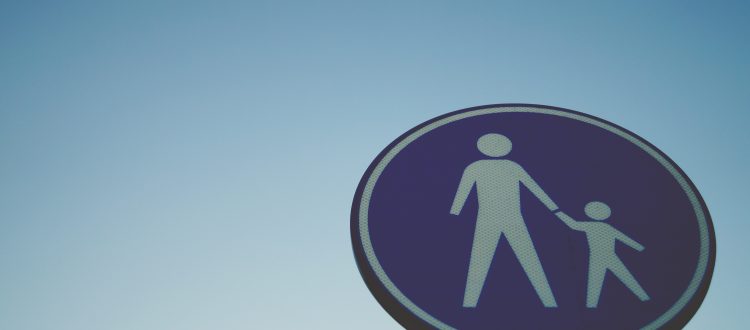It’s about cause and effect – over generations. It’s a mind-bending concept, but one that over the past two decades has earned widespread acceptance. And it is beginning to change how society thinks about preventing disease.
The concept is this: Your health and the diseases you are susceptible to at, say, the age of 50 are significantly determined by the environment that your mother lived in when you were in her womb. And — beyond that — your health at 50 is partially determined by the environment your grandmother lived in when she was 25. That’s because the egg in your mother’s womb that produced you was influenced by your grandmother’s health and environment before your mother was born.
The concept is called the developmental origins of health and disease, or DOHaD. And Portland — especially through OHSU’s Bob and Charlee Moore Institute for Nutrition & Wellness and the OHSU-PSU School of Public Health — has become one of the world’s most important centers of research on the phenomenon.
Twenty-five years ago, DOHaD originated as the “Barker Hypothesis,” after British epidemiologist David Barker, who first published reports detailing the idea in the late 1980s. Barker, who died in 2013, would end his career at OHSU — moving to Portland in 2003 to work with his friend and colleague, Kent Thornburg, himself a pioneering OHSU researcher studying developmental physiology. Thornburg is now director of the Moore Institute and an internationally known researcher in DOHaD.
Throughout the 1990s and 2000s, the “Barker Hypothesis” turned into something much more. Research on DOHaD showed that stresses experienced in the womb – most of which come from the nutritional, social and physical environments – alter the structures of organs in the fetus and change how genes express themselves throughout the baby’s lifetime. That, in turn, plays a role much later, in the adult’s susceptibility to cardiovascular disease, diabetes, stroke, some cancers and a range of cognitive, behavioral and mental health problems.
And the developmental origins of health and disease spans generations. Your grandmother’s environment 80 years ago has an effect on your health today. Some DOHaD researchers even trace the high rates of stroke and hypertension in the southeast United States back to the resource-poor South during Reconstruction after the Civil War.
By 2011, Barker and Thornburg had connected with the School of Public Health’s Lawrence Wallack — then dean of PSU’s College of Urban and Public Affairs and a longtime public health researcher and health policy advocate. They wanted help in figuring out how to talk to the public about this revolutionary concept. And how their research and what they were learning might influence public health programming, practice and public policy.
It’s something Wallack — and now other researchers at the School of Public Health — have been working on since. It’s not been easy, Wallack says.
Developmental origins of health and disease is about cause and effect. But it’s a hazily defined cause and effect that includes feedback through complex systems and that spans generations.
“People generally understand things on an individual level,” Wallack says. “And DOHaD is the ultimate systems issue. The way we’re socialized, the way our brain develops, we’re taught about direct cause and effect. Your hand on the stove equals burn. So you have a real problem with people talking about this. It’s a fundamentally different view of the world.”
DOHaD also, at its foundation, is about disadvantage and about health equity —also one of the great challenges public health leaders in general must tackle, Wallack says.
Lower income families often have limited access to good nutrition, or live in exceptionally stressful environments, worrying about paying bills or finding and keeping a safe place to live. That poor nutrition and “toxic stress” has a major effect on their young children or the child developing in a mother’s womb.
“And whether those vulnerabilities are activated depends on the levels of resources within the social and physical environments they’re born into,” says Liana Winett, a School of Public Health associate professor who explores how we talk about the concept.
Recently, Winett and colleagues examined a key question in DOHaD communications: how the language of the science tends to blame women for developmental outcomes.
“The scientific language of developmental origins of disease often centers around what a mother eats, her pregnancy, and includes language such as ‘adverse maternal environments.’ All of that language draws a narrow circle around the woman, as if she is not pregnant within a larger social and physical context,” Winett says. The broader perspective is that while the woman is the immediate environment of the developing fetus, the community is the environment of the mother. “We wanted to know, how can we speak about this important science in ways that help people envision the full range of risks and possibilities for solutions?” Winett asks.
From the broad view, Wallack and Winett both say DOHaD fundamentally changes the notion of when and how disease begins. The challenge is to ensure policy makers understand the science, along with the health equity implications that are part of the science.
“For me, one of the great public health challenges is the issue of equity and inequality,” says Wallack. “And the developmental origins of health and disease provides a scientific view on how inequality and disadvantage transform into a biological impact that starts at the earliest stages of development, and affects people across their entire life course.”
Wallack and Winett say School of Public Health researchers have an exceptional opportunity to explore these issues, in part because of their partnership with the Moore Institute and with Thornburg – pioneers in DOHaD research. And in part, Winett says, because “we are a School of Public Health very focused on the social determinants of health. I think it’s a powerful combination.”

